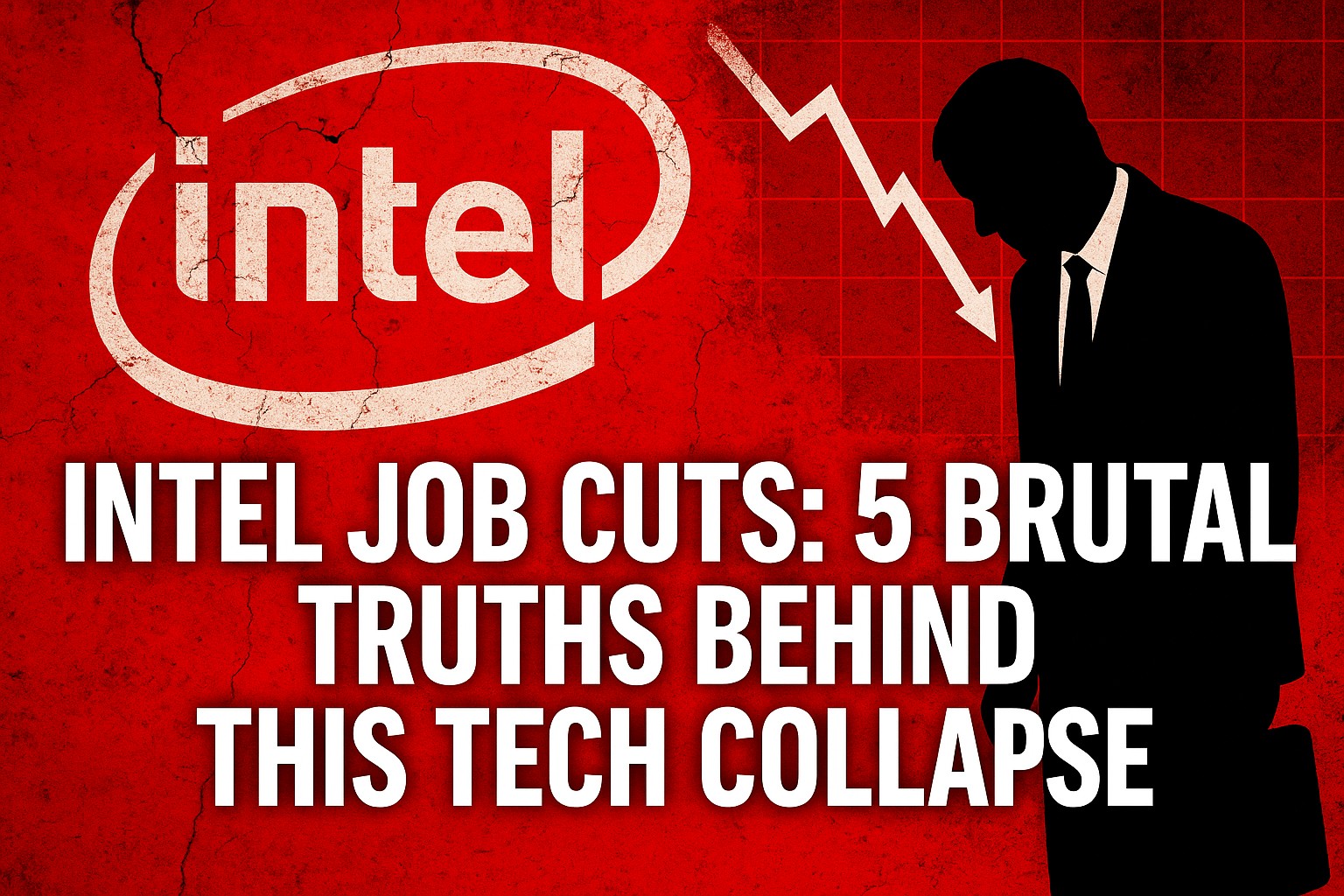Intel job cuts are shaking the tech world to its core, with the company eliminating over 5,500 jobs across key U.S. locations in its latest round of layoffs. These aren’t just minor reductions—engineers, senior architects, and entire departments are being wiped out. The company, once a titan of the chipmaking world, is now shedding talent in a desperate move to stay relevant in the AI era, as reported by Financial Express.
Even more jarring, this round of Intel job cuts follows earlier workforce reductions totaling over 15,000 employees globally in 2025 alone. It’s a clear sign of Intel’s spiraling struggles—not just with cost, but with identity, relevance, and innovation.
Here are the five brutal truths behind Intel’s collapse and what these job cuts truly signal.
1. Intel Job Cuts Signal an Identity Crisis
At its peak, Intel was synonymous with innovation. But now, the very engineers who once propelled its dominance are being let go. This isn’t just downsizing—this is a strategic surrender. CEO Lip-Bu Tan admitted that Intel is no longer in the top 10 semiconductor companies, according to a deep-dive by The Telegraph India.
The new leadership is cutting down the workforce to rebuild agility, but the layoffs tell a bigger story: Intel is losing its core talent and competitive edge at a time when AI innovation demands more, not less.
2. Intel Job Cuts Are Destroying High-Impact Divisions
The 5,500 layoffs disproportionately impact high-skilled teams in chip design, cloud infrastructure, and even AI acceleration units. Over 2,900 roles are being slashed from Intel’s Oregon campuses alone—an epicenter of R&D and fab engineering.
And it’s not just engineers. Windows Central reports that Intel is also closing down its automotive chip division in Munich, walking away from future-forward segments that other companies are racing toward. This is the cost of years of missed deadlines and failed manufacturing upgrades.
3. Intel Job Cuts Reflect Failure to Compete in AI
While competitors like Nvidia are soaring to a $4 trillion valuation by dominating AI hardware, Intel has failed to launch any competitive AI chips. Its delays in implementing 7nm and 10nm processes have left it generations behind as detailed by Tom’s Hardware.
As artificial intelligence takes over the computing world, Intel is being sidelined. The Intel job cuts reveal how badly the company misread the pace of change—and how far it must now stretch to catch up.
4. Intel Job Cuts Foreshadow Foundry Model Breakdown
Once proud of its integrated device manufacturing (IDM) model, Intel is now rumored to be considering a fabless transition, similar to AMD or Nvidia. If true, that would be an astonishing reversal for a company that once led global semiconductor fabrication.
Industry insiders say the job cuts are part of Intel’s shift away from heavy, in-house production toward outsourcing, possibly relying more on TSMC. As reported in Economic Times, Intel is aggressively restructuring its operating model to survive in a foundry-first world—but it’s already behind.
5. Intel Job Cuts Will Widen the Global Talent Gap
These job losses don’t just impact Intel employees—they shake up the tech talent ecosystem in the U.S. and globally. Engineers forced out of Intel now face fierce competition, especially as other companies grow more cautious with hiring.
Meanwhile, the company’s in-office mandates—requiring four days a week on-site starting September—are alienating remote-first workers during a delicate transition period. TechRadar notes that this rigid culture shift might further slow Intel’s innovation pipeline.
Why These Intel Job Cuts Matter to You
If you work in semiconductors, software engineering, or hardware design, Intel job cuts are a clear warning: staying ahead means constant upskilling. AI chips, edge computing, and multi-chiplet design are where future jobs will lie.
For students and professionals in India and the U.S., the message is urgent—don’t wait for your job to be cut. Learn from Intel’s fall, and prepare to work with companies that are driving the AI revolution forward.
And for the industry, these cuts show that legacy reputation isn’t enough. Only companies that deliver fast, efficient innovation will survive in the post-AI era.
The Intel job cuts are a symptom of something far greater: the painful transformation of a tech giant that once defined computing. The layoffs are brutal, but they’re also a mirror reflecting Intel’s lost time—and the cost of complacency.


